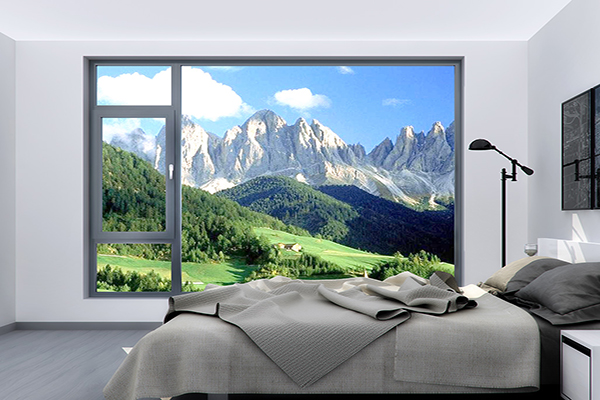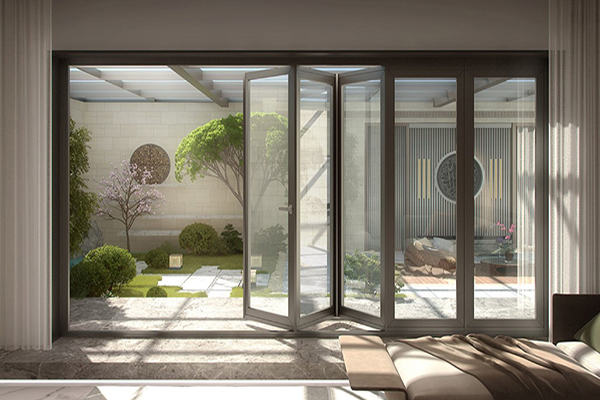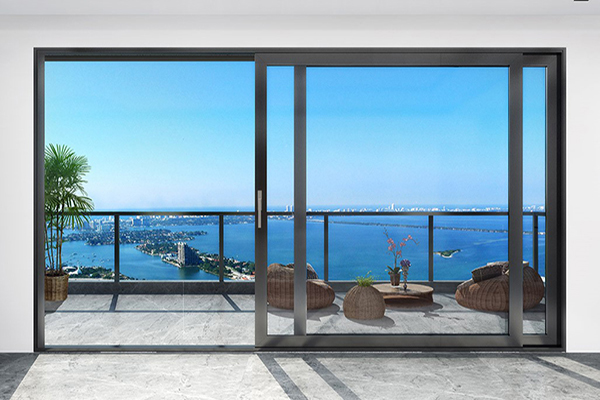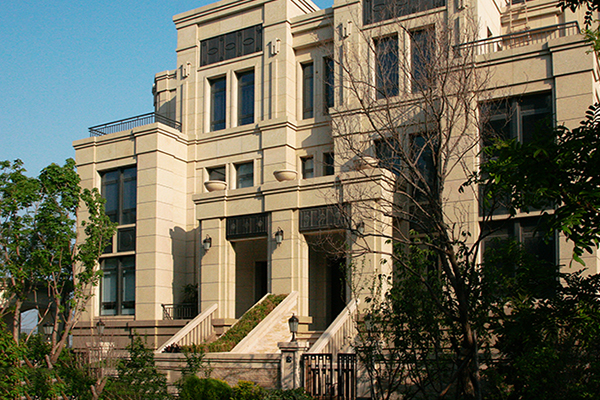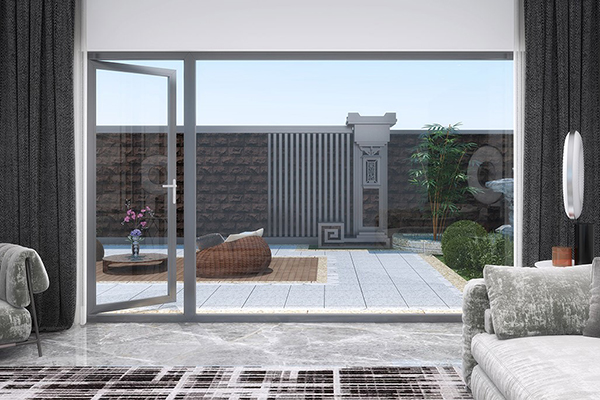I. Material Composition
Aluminum Alloy Windows
The frame of aluminum alloy windows is mainly composed of aluminum alloy profiles. Aluminum alloy is an alloy material made by adding other elements (such as magnesium, silicon, copper, etc.) to aluminum. These alloying elements can enhance the strength, hardness and other properties of aluminum. Both the window frames and sashes are made of aluminum alloy materials, with a relatively simple internal structure, which is a single metal material structure.Aluminum-wood Composite Windows
Aluminum-wood composite windows combine two materials, namely aluminum alloy and wood. The outer layer of the frame is usually made of aluminum alloy, which plays a role in protection and decoration, while also taking advantage of the durability and weather resistance of aluminum alloy. The inside is solid wood, such as oak, pine, etc. This structure combines the natural texture and good thermal insulation performance of wood with the sturdiness and corrosion resistance of aluminum alloy.
II. Performance Characteristics
Thermal Insulation Performance
Aluminum Alloy Windows: The thermal conductivity coefficient of aluminum alloy is relatively high. Although there are some thermal insulation aluminum alloy technologies to improve its thermal insulation performance nowadays, it is generally not as good as aluminum-wood composite windows in this aspect. In a high-temperature environment, heat can easily be conducted into the room through the window frame of ordinary aluminum alloy windows, resulting in a relatively rapid increase in indoor temperature.
Aluminum-wood Composite Windows: Due to the presence of a wood layer inside, and wood is a natural thermal insulation material, it has better thermal insulation performance. It can effectively block the transfer of heat, reduce the loss of indoor heat in winter, block the entry of outdoor heat in summer, make the indoor temperature more comfortable, reduce energy consumption and have a good energy-saving effect.
Sound Insulation Performance
Aluminum Alloy Windows: The sound insulation effect of aluminum alloy windows generally mainly depends on the configuration of the glass. If it is an ordinary single-layer glass aluminum alloy window, the sound insulation effect is limited and can only block some low-frequency noises to a certain extent. However, when double-layer or multi-layer hollow glass and other sound-insulating glasses are used, its sound insulation performance will be improved.
Aluminum-wood Composite Windows: Besides the sound insulation effect of the glass, the wood itself also has a certain sound absorption performance. The internal solid wood layer can absorb and reflect part of the sound waves. Working together with the glass and the outer aluminum alloy layer, aluminum-wood composite windows have a better performance in sound insulation and can effectively reduce external noises, providing a relatively quiet indoor environment.
Durability and Stability
Aluminum Alloy Windows: They have good durability and can resist the erosion of natural factors such as wind, rain and sunlight. Aluminum alloy window frames will not deform or rot due to moisture, and their stability is good. They can maintain their shape and performance for a long time and are suitable for various climatic conditions.
Aluminum-wood Composite Windows: The outer aluminum alloy layer provides good protection and enhances the overall durability of the windows. However, if the internal wood is in a humid environment for a long time or has not been properly maintained, it may deform or crack. But under normal use and with proper maintenance, aluminum-wood composite windows can also have a long service life.
III. Appearance and Texture
Aluminum Alloy Windows
The appearance is usually modern, simple and with tough lines. The surface of aluminum alloy can obtain different colors through various treatment methods (such as anodizing, powder coating, etc.), such as silver-white, black, champagne color, etc. The colors are relatively uniform, bright and have a metallic texture, which can match modern architectural styles very well.Aluminum-wood Composite Windows
They combine the metallic luster of aluminum alloy with the natural texture of wood. From the outside, with the protection of aluminum alloy, they look sturdy and beautiful; from the inside, the texture of the wood gives a warm and natural feeling, which is suitable for various architectural styles, especially for some interior decoration styles that pursue a natural and elegant style.
IV. Price and Maintenance Cost
Price
Aluminum Alloy Windows: The price range is relatively wide. Generally speaking, the price is relatively lower than that of aluminum-wood composite windows. Its price is mainly affected by factors such as the quality of aluminum alloy, brand, processing technology and glass configuration. Ordinary aluminum alloy windows are relatively affordable and occupy a large share in the building door and window market.
Aluminum-wood Composite Windows: Because it combines two materials, and the quality of the wood will also have a great impact on the price, the price of aluminum-wood composite windows is usually higher. High-quality wood and exquisite craftsmanship will further increase the price.
Maintenance Cost
Aluminum Alloy Windows: The maintenance cost is low. The surface cleaning is simple. Generally, it can be wiped with a damp cloth. If there are slight damages such as scratches, the surface coating can be repaired to a certain extent. Moreover, aluminum alloy will not rot or be damaged by insects.
Aluminum-wood Composite Windows: The maintenance is relatively complicated. It is necessary to regularly maintain the wood part, such as preventing the wood from getting damp and painting it regularly. If the wood deforms or cracks, the repair cost is relatively high. However, the maintenance of the aluminum alloy part is similar to that of aluminum alloy windows and is relatively simple.


